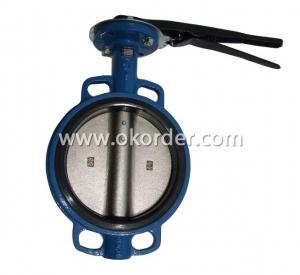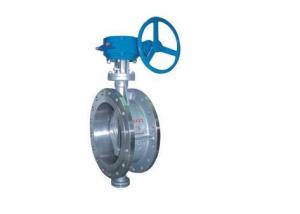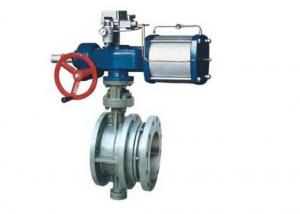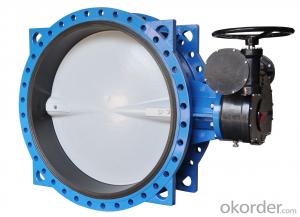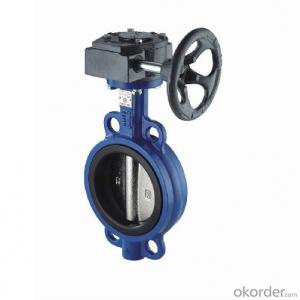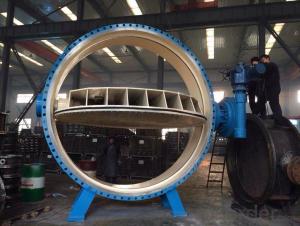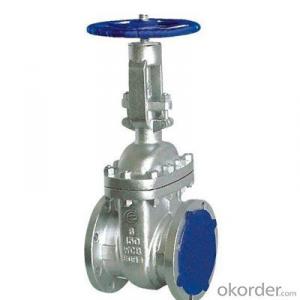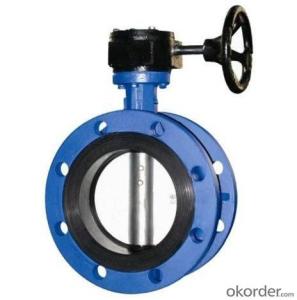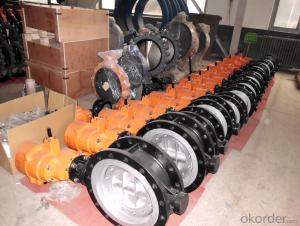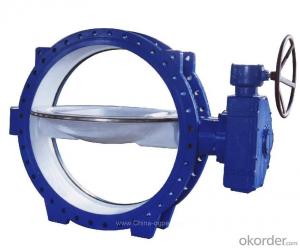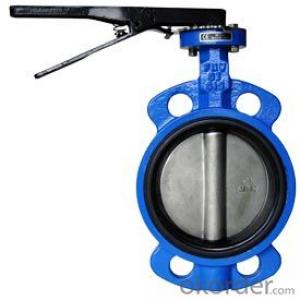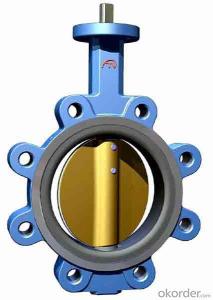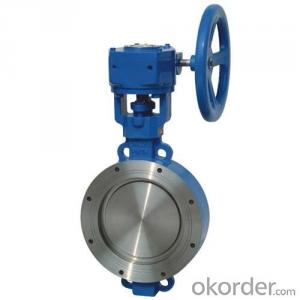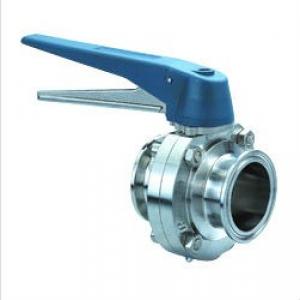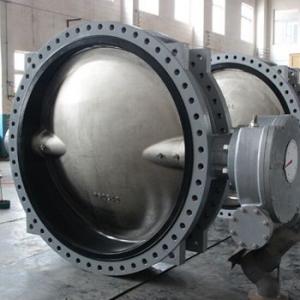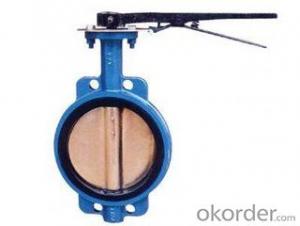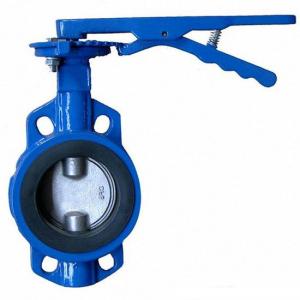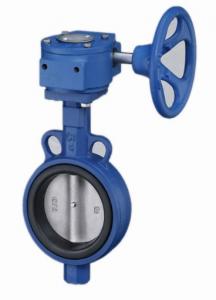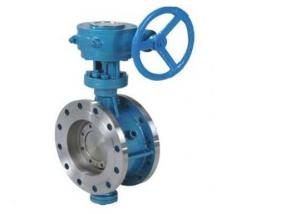Butterfly Valve High Quality Sanitary Cheap Price
- Loading Port:
- China main port
- Payment Terms:
- TT OR LC
- Min Order Qty:
- 500 pc
- Supply Capability:
- 5000 pc/month
OKorder Service Pledge
OKorder Financial Service
You Might Also Like
1. Butterfly ValveManual Wafer Description:
A butterfly valve is a valve which can be used for isolating or regulating flow. Operation is similar to that of a ball valve, which allows for quick shut off. Butterfly valves are generally favored because they are lower in cost to other valve designs as well as being lighter in weight, meaning less support is required.
2.Main Features of the Manual Wafer Butterfly Valve
a)Cast hole. Flange connection meet ANSI 125/150# DIN PN10/16 BS4504 PN10/16 in the meanwhile.
b)Soft seat. Replaceable. Increase of service life.
c Square and short neck. Easy to stick scutcheon and cost saving.
3. Butterfly Valve Manual Wafer Images:
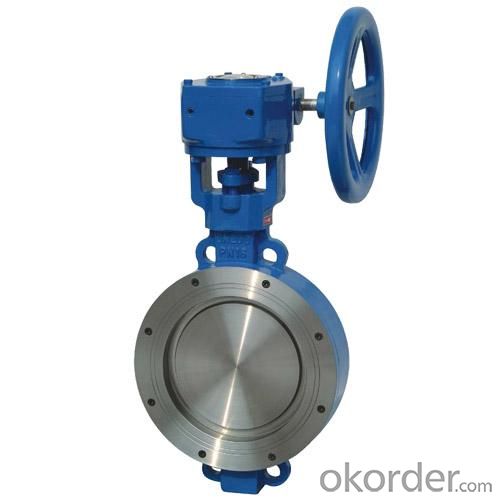
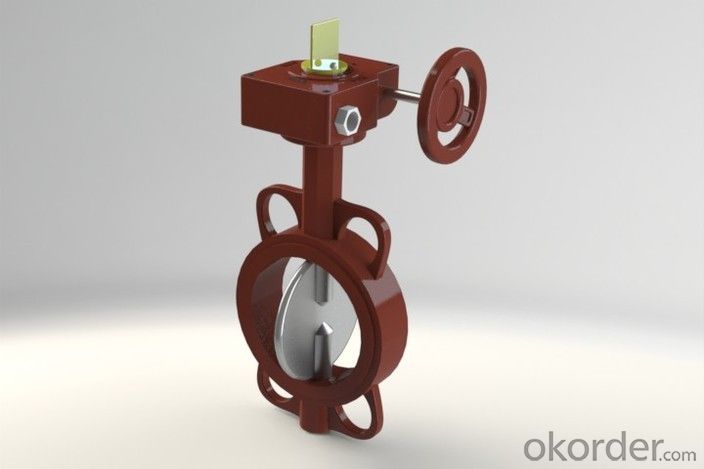
4.Manual Wafer Butterfly Valve Specification:
Sizes:DN40mm-DN1400mm
Materials:
a) Body: CI(cast iron ,GG25 )/ DI (ductile iron ,GGG40)
b) Disc: DI / CF8 / CF8M / C95400
c) Seat: EPDM / NBR / TEFLON / VITON
1)Size: DN40-DN1400
2)Material:body-CI/DI/WCB/SS
5.FAQ
1. How about the Installation of the Wafer Style Butterfly Valve?
A: Butterfly valves are installed by inserting the valve between two flanges using bolts or studs and nuts to hold it all together. This type of installation, of course, makes it impossible to disconnect just one side of the piping system from the valve. That benefit is received using the lug style valve.
2. What is manual wafer butterfly valveA: Wafer style is the more common of the two and is less expensive than the lug style. The wafer style butterfly valve is just about the standard. It ís so common that no one even bothers to use the word "wafer" when ordering a butterfly valve. It is taken for granted that if a butterfly valve is ordered, a wafer style will be received.
- Q: What's the use of fire butterfly valve?
- Its working principle is as follows:1, the signal butterfly drive by the worm gear drive shaft and butterfly plate rotation, realize the opening and closing and control flow.2, rotating worm gear drive handwheel, so that the butterfly plate to open and close and adjust the flow of purpose, hand wheel clockwise rotation for the valve closed.3. The worm gear drive box is equipped with micro switches in two forms:A, in the gear box body is provided with open and close direction two microswitches, respectively, when the valve fully open and close action, connected to the control room "valve open" valve off "light source, to accurately display the switch state of the valve.B, the transmission device is arranged in the box body the microswitch (disc position close to 0 degrees), when the butterfly plate from 0 degrees to 40 degrees when the position of a micro switch, the output valve closed signal, 40 degrees to 90 degrees when the position of another pair of normally closed output valve opening signal. A cam that adjusts the touch microswitch and shows the different positions of the disc.The fire in the fire that is the switch signal butterfly valve in the pipe network, because the fire pipe water must be kept clear, so as to ensure the timeliness of fire, so the signal valve once closed, will tell the host signal module alarm, fire control network notify the monitoring center is closed.
- Q: The difference between butterfly valve d71x_10s and d341s-10
- Before distinguishing between the two, you must first read the identification of the valve type:D stands for butterfly valves,3 means that the worm gear is connected and the drive does not indicate the handle7 and 4 indicate pipe to clamp connection, pipe flange connection, respectively1 means single eccentric, that is, the stem is not in the center of the butterfly plateThe former S indicates the material name of the valve body - plastic, X means sealing and the lining material is rubberThe latter S indicates the sealing lining material code ---- plastic, and the valve body is cast iron.10 means stress.
- Q: What's the size of the signal butterfly valve sleeve?
- The structure characteristics and working principle: the top design electrical device the butterfly valve of the worm and the worm gear driving device, and with the stem straight connecting transmission. In the closed precision electromechanical device, opening mechanical instructions and imported electrical components and parts with rust proof valve.
- Q: How can one - way sealed butterfly valves and two-way sealed butterfly valves be distinguished?
- One way sealing butterfly valve is the front of the butterfly valve. When it closes, it must face the direction of the medium. The medium flows only in one direction, and the arrow on the valve body indicates the direction of the flow direction of the medium. Attention should be paid to the flow direction of the medium during installation. The two-way sealing butterfly valve is that the butterfly plate can face or back the direction of the medium, and the installation needs no attention to the direction of the flow of the medium, and the valve body also has no indication of the direction of the flow direction of the medium. Two way sealing butterfly valve stem force is greater than one-way butterfly valve stem. Design, the same diameter, pressure butterfly valve, two-way sealing butterfly valve stem diameter than one-way sealing butterfly valve stem diameter.
- Q: What are the advantages of butterfly valves?
- D. sediments are not readily accumulated;The E. is compact and has little installation
- Q: What is the principle of butterfly valve and check valve? Any difference?
- Crown valve pressButterfly valve is butterfly valveThe check valve is a check valveButterfly valve is mainly switching functionThe check valve mainly stops the pipe from flowing backwardsThe two can only be said to be valvesThe others are different
- Q: Where are the exhaust valves, mud valves and butterfly valves?
- Chemical plant with colloid, puffed agent and granule. Wine industry, paper industry. Butterfly valves are used in petroleum, chemical, food, pharmaceutical, textile, water and electricity, ships, urban water supply and drainage, smelting, and energy systems as regulating and intercepting devices.
- Q: How does PLC control butterfly valves?
- PLC control butterfly valve, usually control pneumatic butterfly valve or electric butterfly valve, see which way you control butterfly valve.PLC control pneumatic butterfly valve, that is, PLC program control, electric control, gas control, gas control butterfly valve;PLC control electric butterfly valve, that is, PLC program control electric, electric control butterfly valve.Ordinary switch butterfly valve is the program control on and off, to the 1 way valve open, to another 1 way valve off.
- Q: My bike has now 6200 miles on the odometer. The manual says that a valve adjustment should be performed every 6000 miles. But the bike runs fine. Can I just have the valve checked or should I have them adjusted even though the bike is fine? What will happen if I just keep riding it?
- First off you are suppose to take your bike back to have your valves adjusted after 500 miles. Anything later can cause problems. The motor is already broken in. why did you wait so long to have them adjusted ? Your vibration is the tire is not balanced right , take it else where. good luck
- Q: 1988 volkswagon cabriolet, rabbit tried mystery oil let sit for a week having trouble with stuck valves even taken a wrenrch to manually unstick. help any suggestions 4 cyclinder car has been sitting up for about 4 years
- The only reason for a stuck valve is if it bent from a thrown timing belt. Sitting 4 years will not cause valves to stick usually, because there is always some oil leakage from the head, that prevents rust. How do you know the valve is stuck? Have you done a compression test, checked the valve clearance? When you say you take a wrench to manually unstick it, it would help to know what you mean, because there is no place to put a wrench that would help unstick a valve that was stuck. You need to tell us much more.
Send your message to us
Butterfly Valve High Quality Sanitary Cheap Price
- Loading Port:
- China main port
- Payment Terms:
- TT OR LC
- Min Order Qty:
- 500 pc
- Supply Capability:
- 5000 pc/month
OKorder Service Pledge
OKorder Financial Service
Similar products
Hot products
Hot Searches
Related keywords





